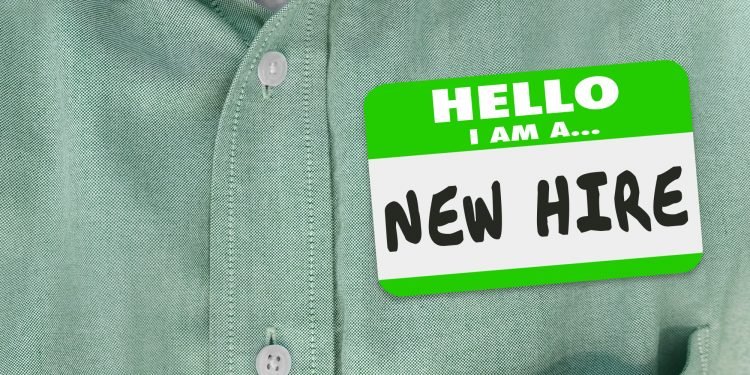One-third of all companies don’t have a thorough onboarding process. It can cause employees to leave before they even begin their job duties because they like to know what they’re getting into. That’s where the paperwork comes in.
Onboarding documents give employees a complete rundown of what their job will entail. They also tell workers about the benefits you can offer them and let them know all about your company policies.
There are a lot of legal and tax-related documents that you’ve got to include in a new hire’s onboarding packet as well. If you don’t, you can get into some serious trouble.
These are only a few of the many different types of new hire paperwork. Check out this guide to learn more.
What Is Onboarding?
So, first thing’s first, what is onboarding? It’s the process that allows you to seamlessly integrate a new hire into your company. If you cut corners during onboarding, your employees won’t know what to do during their first day or any day after that.
There are a few documents that you’ll need to prepare before a new hire comes in for onboarding. If there are any errors in the paperwork, it can push back the employee’s start date and you can get into some serious legal trouble. That’s why many business owners invest in onboarding software.
- Hiring Documents
Computer programs can’t help you much if you don’t know what paperwork you need your new hires to fill out.
Contrary to popular belief, onboarding doesn’t start after someone is hired. It starts before the process begins, with the hiring documents.
Application Form
Any potential employee has to fill out an application form of some kind. Usually, it highlights a candidate’s credentials, education, work history, references, and more. Along with the application form, the employee should be required to turn in a resume and maybe even a cover letter.
When the potential new hire finishes filling out the application, they have to sign it to verify that the information is accurate and consent to any background checks.
Offer Letter/ Employee Contract
When you decide to hire someone, you’ll present them with an offer letter. It will include a quick job description. You’ll highlight all your expectations for the employee and provide compensation details.
You’ll let the worker know who their direct supervisor will be, give them a list of benefits the company can offer them, and tell them when their start date will be. If your company requires employees to pass a drug or criminal background check, you’ll include these contingencies here.
If the employee decides to accept your generous offer, they’ll sign the letter, and you can put it away in their file.
Drug Test Records
If you require your employees to take a drug test, you’ll need to let potential workers know if it’s a one-time thing or if the company demands frequent tests.
Either way, you have to hold on to all drug test results for at least a year. Depending on what kind of company you run, and state regulations, you may have to keep drug test records on file longer than that.
- Tax and Legal Forms
Next, it’s time to move on to the legal forms. If your new hires don’t fill out the proper documents, you won’t know how much money to withhold from their paychecks for taxes.
As you can imagine, that will throw your entire payroll process off-kilter and get you into serious trouble with the IRS.
W-4 Form
Every new hire has to fill out a W-4 form. Doing so will let the IRS know how much money should be withheld from the employee’s paycheck for tax purposes.
You can download a W-4 document from the IRS website. If the employee never signs this form, they legally can’t receive a paycheck.
State Withholding
Depending on where your company operates, you may have to ask your employees to fill out a state-specific W-4.
This form functions the same way as a regular W-4 with a small difference. It tells you how much of your employee’s paycheck has to be withheld for state taxes.
I-9 Form
An I-9 is an employment eligibility form. It states that a person is allowed to work within the United States. Your new hire will have to sign it within three days of their initial start date.
If it isn’t filled out on time, you could face penalties and fees. It’s important to note that you don’t have to turn the document in, but you will need to show it to an immigration officer if one happens to stop by.
As you can imagine, if you mess up an employee’s I-9 form, it can push back their start date. If you don’t want to have an angry new hire on your hands, it might be a good idea to look into remote I-9 verification services.
- Company-Specific Documents
Now it’s time to delve into your company-specific paperwork. Not all of these documents are required, but they are nice to include in a person’s new hire packet.
Employee Handbook
The employee handbook highlights all of your company’s rules and procedures, such as your dress code, code of conduct, and company values.
Most business owners also include their company’s mission statement in the handbook along with the business’s goals. If you have time off and attendance policies, jot those down in the handbook as well. Employees should know what will happen if they pull a no-call no-show.
Ask that your new hires sign the handbook to confirm that they’ve read through and understand all of its contents.
Risk Management Policies
Businesses face risks every day. A data breach can ruin a company’s reputation forever. It also puts your business’s confidential data in the hands of hackers.
You never know when a natural disaster will knock out your equipment or put your employees in danger. To keep your company as safe as possible in all these instances, you should have risk management policies in place.
Include these policies in your onboarding paperwork. This way, your new hires know exactly how to prevent and respond to common business risks.
Guidelines
Your employees can’t reinforce your brand if they don’t know what it is. You’ve got to include your branding guidelines in your onboarding packet.
It will give your new hires a rundown of your business voice, colors, and logo.
Emergency Contact
Accidents can happen no matter how safe your field of work is. A person can trip over a cord in the office. Depending on how they fall and their age, they may have to go to the hospital.
When this happens, you’ll need to be able to get in touch with the employee’s emergency contacts.
Calendar
Employees will miss work meetings if they don’t know when they are. Of course, you can send out emails, but providing workers with an event calendar is much more convenient.
If you allow for a mixture of office and remote work, you can use the calendar to let your workers know where they need to be on what days. You can also include office events and holiday parties on the calendar.
Security and Parking
If employees need a keycard or code to get into the office building, that’s something that you should give to them during onboarding. The same goes if they need a parking sticker of some kind.
If workers have to park in a certain area to avoid being towed, that’s something they should know ahead of time, too.
- Pay and Benefits
One of the main reasons why someone decides to apply for an open position is the benefits and pay. That’s why it’s important to provide all this info in the job description and during the onboarding process.
You’ll also need to get the new hire’s direct deposit information so you can pay them.
FMLA
There may come a time when an employee needs to request time off via the Family Medical Leave Act.
You can deny their leave, but you’ll still have to keep a record stating that the employee applied for it. The Department of Labor might need to see the form at some point.
Not all businesses are covered under the FMLA. If yours is, you should let employees know what it entails during the onboarding process.
Direct Deposit
Paper checks are still around, but they’re a bit outdated. Most businesses pay their employees via direct deposit.
To make sure your new hires get paid on time, you’ll need to get their bank account information during onboarding. Have them write down their account and routing number.
401K
Some companies allow their employees to pay into a 401K plan. When a worker retires, they can pull money from this fund to pay for their expenses into their golden years.
Signing up for a 401K program will allow your business to take advantage of some nice tax credits. Retirement plans are something that’s attractive to many employees as well. Use the new hire paperwork to let employees know how much they’ll have to pour into their retirement pool every month.
Health Insurance
Employees can use a small portion of their paycheck to sign up for health insurance. Oftentimes, getting company-based insurance is cheaper than signing up for it individually.
Highlight all the information about your company insurance during onboarding and let workers know how they can opt-in and out.
How to Prepare Your Paperwork
The hardest part of the onboarding process is preparing the paperwork. You want to do it in a way that will be interesting to the new hire. If you feel lost, automating may help.
Make It Interactive
A person can only read so many paragraphs of text before their eyes begin to glaze over.
Break up the monotony by giving your new hires something to sign or do. They’ll absorb the information much better that way.
Translate Company Jargon
Does your company use a lot of jargon? Someone who hasn’t worked for you before may not be able to understand it.
It’s recommended to give new employees a glossary that has a list of all the words that may be lost on them.
Pair New Hires With a Buddy
A new employee might be a little hesitant to ask you a question. Not only that, but you’re a busy person with a business to run. You may not be able to stop working every few minutes to help an employee with their onboarding paperwork.
To this end, consider pairing new hires with a buddy. Someone that’s been with the company for a while will be able to walk the newbie through everything efficiently.
Automate Where You Can
Preparing an onboarding package can take a lot of time. Again, making a mistake could cost your business a lot of money and get you into legal trouble.
That’s why you should leave it up to a computer. Automating your onboarding documents will save you time, and it eliminates the possibility of human error.
Important Onboarding Documents to Prepare for Your New Hires
As you can see, there are a lot of important onboarding documents that you have to prepare for your new hires. An employee can’t start their first day until they get their I-9 form filled out, and you can’t pay them for their work until you get their tax and bank account information.
Don’t be afraid to automate some of these documents and consider providing new hires with a buddy who can walk them through everything.
For more tips that will help you with your onboarding, visit the Business section of our blog.








